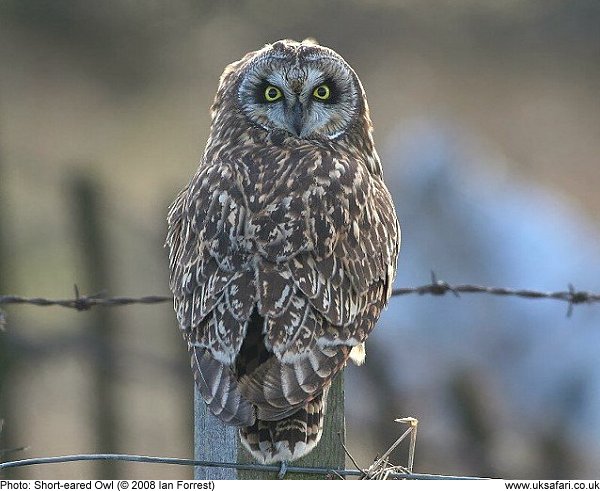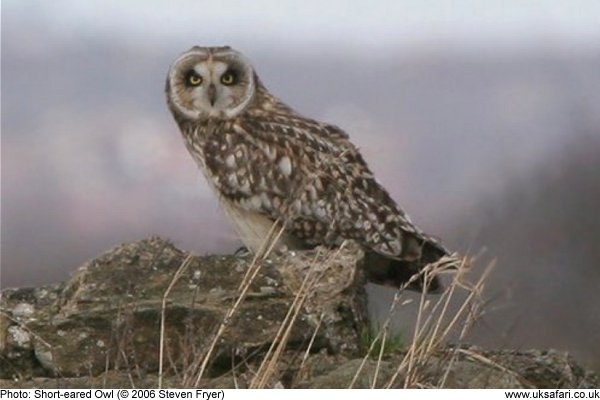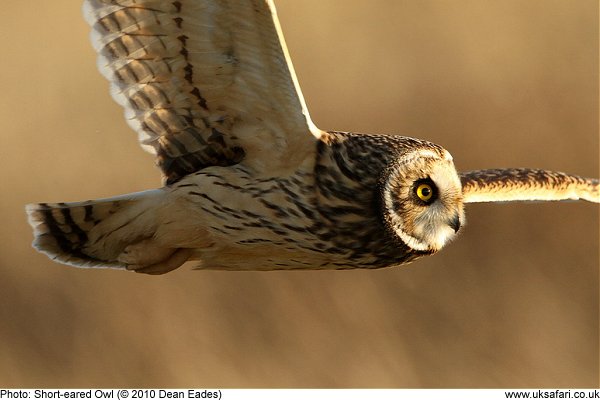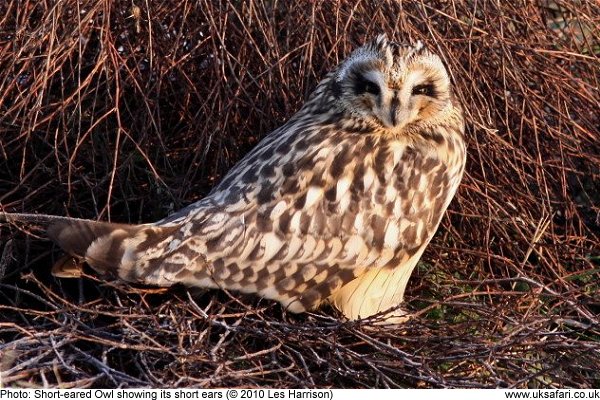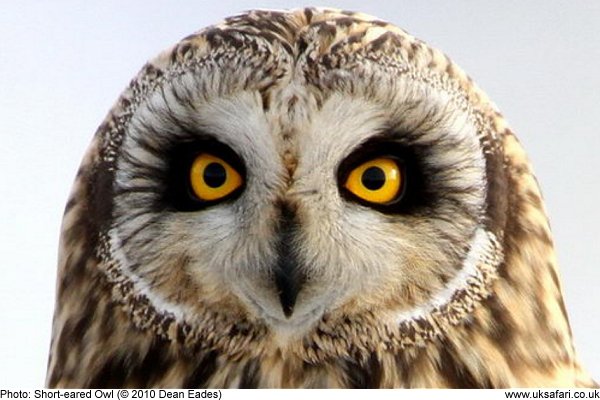 Quick Facts
Quick Facts
Scientific name: Asio flammeus
Size: up to 40cm
Distribution: Found throughout most of the UK. Scarce in north west Scotland and the west of N. Ireland
Months seen: All year round
Life Span: Over 6 years (source: BTO from ringing)
Habitat: Fields, farmland, moors and coastal marshes
Food: Mostly voles and mice
Special features: Short-eared owls have mottled brown plumage and bright yellow eyes. They have long narrow wings, and are able to glide silently onto their small mammal prey. Short-eared owls are diurnal so you could spot them at any time of day, but they're especially active early in the morning and then again late in the afternoon until dark.
Rather than perching in trees Short-eared owls prefer to perch on the ground or on fence posts. They nest on the ground in thick vegetation and are unique in that they actually build a rudimentary nest, rather than occupying a hole in a tree or the nest of another species.
In order to attract a mate, the male short-eared owl carries out a dramatic aerial display, involving rising quickly, hovering and descending with exaggerated wing beats, along with singing and wing-clapping.
The 'short ears', which give these birds their name, are the two short feathery tufts on top of the head. They can be raised or lowered at will. Although they are not used for hearing, they are thought to be used as a communication device to signal to other owls.
 Related Pages
Related Pages

 Popular Pages
Popular Pages
Amphibians, Bats, Badgers, Beetles, Birds, Birds of Prey, Bumble Bees, Butterflies, Caterpillars, Creepy-Crawlies, Deadly Spiders, Dolphins, Dragonflies, E-Postcards, False Widow Spiders, Free Newsletter, Frogs, Fungi, Garden Spiders, Glow-Worms, Grey Squirrels, Hedgehogs, House Spiders, Ladybirds, Mammals, Marine Mammals, Moths, Owls, Reptiles, Spiders, Toads, Trees, Wildlife Hospitals
© Copyright 2017 G. Bradley - UK Safari | About Us | Links | Contributors


 Short-eared Owls
Short-eared Owls